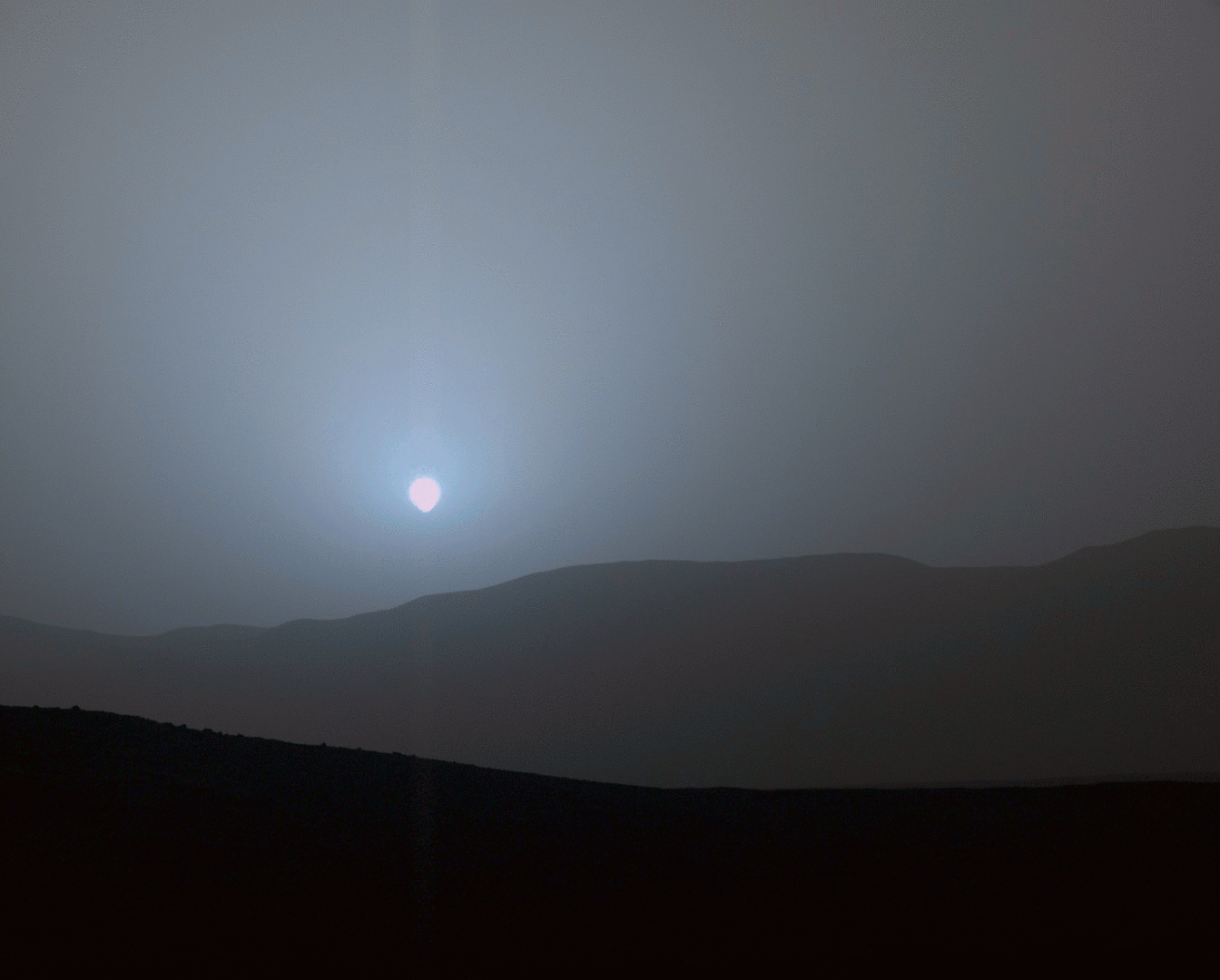Two Worlds, Different Sunsets
Sunset, Gustav Crater Mars (credit: JPL-Caltech/Texas A&M/Cornell)
How do sunsets appear on both Mars and Earth? That's the question asked by curious scientists at the Jet Propulsion Laboratory at CalTech. Comparison images are dramatic. Sundown on Mars is bluish.
Besides the Sun's size difference seen between the Earth and Mars, the Red Planet is 50 million miles further away and the sunsets produce different atmospheric colors. The difference is caused by the thinner Maritan atmosphere and finely suspended dust particles that refract sunlight differently. According to the Lab:
The blue colors come from the fact that the fine dust is the right size so that blue light penetrates the atmosphere slightly more efficiently. When the blue light scatters off the dust, it stays closer to the direction of the Sun than sunlight of other colors does.
Images of sunsets on both planets are striking and both are beautiful.

Earth sunset comparison, Queensland Australia (credit: SWP Media, Inc.)

Sinking Sun animation at Gale Crater (credit: NASA/JPL-Caltech/MSSS/Texas A&M)
Someday, it would be exciting to view a blue sunset in person. WHB